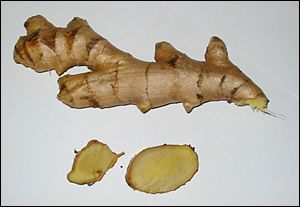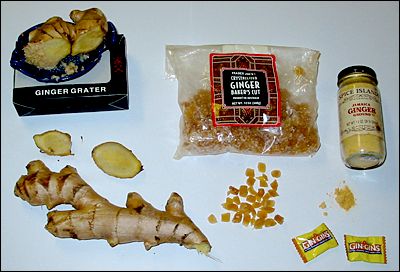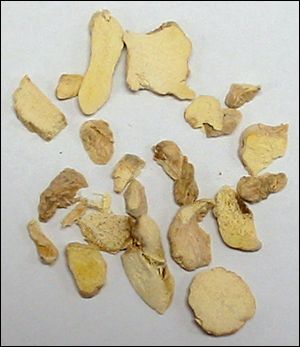 |
||
 |
||
|
|
|
Active Hydrogen
Adrenal Extracts
Alanine
Alpha-Linolenic Acid
Alpha-Lipoic Acid
AMP
Amylase Inhibitors
Arginine
Bee Pollen
Beta Carotene
Beta-glucan
Betaine
Beta-Sitosterol
Biotin
Borage Oil
Boron
Bovine Cartilage
Bovine Colostrum
Brewer's Yeast
Bromelain
Calcium
Capsaicin
Carnitine
Carnosine
Chitosan
Chloride
Chlorophyll
Chondroitin
Chromium
CLA
Cobalt
Coenzyme Q10
Copper
Creatine
Cysteine
DHA
DHEA
DMAE
EGCG
Evening Primrose Oil
5-HTP
Fiber (Insoluble)
Fiber (Soluble)
Fish Oil
Flavonoids
Fluoride
Folate
Fumaric Acid
GABA
Gamma-Linolenic Acid
Glucomannan
Glucosamine
Glutamic Acid
Glutamine
Glutathione
Glycine
Grape Seed Extract
Histidine
HMB
Hydroxycitric Acid
Indole
Inosine
Inositol
Iodine
Ipriflavone
Iron
Isoleucine
Lactase
Lecithin
Leucine
Lipase
Lutein
Lycopene
Lysine
Magnesium
Malic Acid
Manganese
Mannose
Melatonin
Methionine
Methoxyisoflavone
Molybdenum
MSM
N-Acetyl Cysteine
NADH
Naringin
Niacin
Octacosanol
Oligosaccharides
Olive Leaf Extract
Ornithine
Oryzanol
PABA
Pancreatic Enzymes
Pantothenic Acid
Phenylalanine
Phosphatidylserine
Phosphorus
Phytic Acid
Policosanol
Potassium
Pregnenolone
Probiotics
Propolis
Psyllium
Pyridoxine
Pyruvate
Quercetin
Resveratrol
Retinol
Riboflavin
Ribose
Royal Jelly
SAMe
Selenium
Shark Cartilage
Silicon
Sodium
Spirulina
Spleen Extracts
St. John's Wort
Strontium
Sulforaphane
Sulfur
Taurine
Thiamine
Tocopherol
Tea Tree Oil
Tyrosine
Usnic Acid
Valine
Vanadium
Vinpocetine
Vitamin A
Vitamin B1
Vitamin B2
Vitamin B3
Vitamin B5
Vitamin B6
Vitamin B9
Vitamin B12
Vitamin C
Vitamin D
Vitamin H
Vitamin K
Whey Protein
Xylitol
Zinc
Abalone Shell (shi jue ming)
Abutilon Seed (dong kui zi) Acanthopanax Bark (wu jia pi) Achyranthes (niu xi) Aconite (fu zi) Acorus (shi chang pu) Adenophora Root (nan sha shen) Agkistrodon (bai hua she) Agrimony (xian he cao) Ailanthus Bark (chun pi) Akebia Fruit (ba yue zha) Albizzia Bark (he huan pi) Albizzia Flower (he huan hua) Alfalfa (medicago sativa) Alisma (ze xie) Aloe (lu hui) Alum (bai fan) Amber (hu po) Ampelopsis (bai lian) Andrographis (chuan xin lian) Anemarrhena (zhi mu) Antelope's Horn (ling yang jiao) Apricot Seed (xing ren) Areca Peel (da fu pi) Areca Seed (bing lang) Arisaema (tian nan xing) Ark Shell (wa leng zi) Arnebia (zi cao or ying zi cao) Arnica (arnica montana) Artichoke Leaves (Cynara scolymus) Ash bark (qin pi) Ashwagandha (withania somniferum) Aster (zi wan) Astragalus (huang qi) Aurantium (zhi ke [qiao]) Bamboo Juice (zhu li) Bamboo Shavings (zhu ru) Belamcanda Rhizome (she gan) Benincasa Peel (dong gua pi) Benincasa Seed (dong gua xi/ren) Benzoin (an xi xiang) Bilberry (yue ju) Biota Leaf (ce bai ye) Biota Seed (bai zi ren) Bitter Melon (ku gua) Bitter Orange Peel (ju hong) Black Cohosh (sheng ma) Black Plum (wu mei) Black Sesame Seed (hei zhi ma) Bletilla (bai ji) Boneset (ze lan) Borax (peng sha) Borneol (bing pian) Bottle Brush (mu zei) Buddleia (mi meng hua) Buffalo Horn (shui niu jiao) Bulrush (pu huang) Bupleurum (chai hu) Burdock (niu bang zi) Camphor (zhang nao) Capillaris (yin chen hao) Cardamon Seed (sha ren) Carpesium (he shi) Cassia Seed (jue ming zi) Catechu (er cha) Cat's Claw (uncaria tomentosa) Cephalanoplos (xiao ji) Celosia Seed (qing xiang zi) Centipede (wu gong) Chaenomeles Fruit(mu gua) Chalcanthite (dan fan) Chebula Fruit (he zi) Chinese Gall (wu bei zi) Chinese Raspberry (fu pen zi) Chrysanthemum (ju hua) Cibotium (gou ji) Cinnabar (zhu sha) Cinnamon (rou gui or gui zhi) Cistanche (rou cong rong) Citron (xiang yuan) Citrus Peel (chen pi) Clam Shell (hai ge ke/qiao) Clematis (wei ling xian) Cloves (ding xiang) Cnidium Seed (she chuang zi) Codonopsis (dang shen) Coix Seed (yi yi ren) Coptis (huang lian) Cordyceps (dong chong) Coriander (hu sui) Corn Silk (yu mi xu) Cornus (shan zhu yu) Corydalis (yan hu suo) Costus (mu xiang) Cranberry (vaccinium macrocarpon) Cremastra (shan ci gu) Croton Seed (ba dou) Curculigo (xian mao) Cuscuta (tu si zi) Cuttlefish Bone (hai piao xiao) Cymbopogon (xiang mao) Cynanchum (bai qian) Cynomorium (suo yang) Cyperus (xiang fu) Dalbergia (jiang xiang) Damiana (turnera diffusa) Dandelion (pu gong ying) Deer Antler (lu rong) Dendrobium (shi hu) Devil's Claw (harpagophytum procumbens) Dianthus (qu mai) Dichroa Root (chang shan) Dittany Bark (bai xian pi) Dong Quai (tang kuei) Dragon Bone (long gu) Dragon's Blood (xue jie) Drynaria (gu sui bu) Dryopteris (guan zhong) Earthworm (di long) Eclipta (han lian cao) Elder (sambucus nigra or sambucus canadensis) Elsholtzia (xiang ru) Ephedra (ma huang) Epimedium (yin yang huo) Erythrina Bark (hai tong pi) Eucalyptus (eucalyptus globulus) Eucommia Bark (du zhong) Eupatorium (pei lan) Euphorbia Root (gan sui or kan sui) Euryale Seed (qian shi) Evodia (wu zhu yu) Fennel (xiao hui xiang) Fenugreek (hu lu ba) Fermented Soybeans (dan dou chi) Flaxseed (ya ma zi) Fo Ti (he shou wu) Forsythia (lian qiao) Frankincense (ru xiang) Fritillaria (chuan bei mu) Gadfly (meng chong) Galanga (gao liang jiang) Galena (mi tuo seng) Gambir (gou teng) Gardenia (zhi zi) Garlic (da suan) Gastrodia (tian ma) Gecko (ge jie) Gelatin (e jiao) Genkwa (yuan hua) Germinated Barley (mai ya) Ginger (gan [sheng] jiang) Ginkgo Biloba (yin xing yi) Ginseng, American (xi yang shen) Ginseng, Asian (dong yang shen) Ginseng, Siberian (wu jia shen) Glehnia (sha shen) Glorybower (chou wu tong) Goldenseal (bai mao liang) Gotu Kola (luei gong gen) Green Tea (lu cha) Gymnema (gymnema sylvestre) Gynostemma (jiao gu lan) Gypsum (shi gao) Halloysite (chi shi zhi) Hawthorn (shan zha) Hemp Seed (huo ma ren) Homalomena (qian nian jian) Honey (feng mi) Honeysuckle Flower (jin yin hua) Honeysuckle Stem (ren dong teng) Houttuynia (yu xing cao) Huperzia (qian ceng ta) Hyacinth Bean (bai bian dou) Hyssop (huo xiang) Ilex (mao dong qing) Imperata (bai mao gen) Indigo (qing dai) Inula (xuan fu hua) Isatis Leaf (da qing ye) Isatis Root (ban lan gen) Java Brucea (ya dan zi) Jujube (da zao) Juncus (deng xin cao) Kadsura Stem (hai feng teng) Katsumadai Seed (cao dou kou) Kelp (kun bu) Knotweed (bian xu) Knoxia root (hong da ji) Kochia (di fu zi) Lapis (meng shi) Leech (shui zhi) Leechee Nut (li zhi he) Leonorus (yi mu cao) Lepidium Seed (ting li zi) Licorice (gan cao) Ligusticum (chuan xiong) Ligustrum (nč zhen zi) Lily Bulb (bai he) Limonite (yu liang shi) Lindera (wu yao) Litsea (bi cheng qie) Lobelia (ban bian lian) Longan (long yan hua [rou]) Lophatherum (dan zhu ye) Loquat Leaf (pi pa ye) Lotus Leaf (he ye) Lotus Node (ou jie) Lotus Seed (lian zi) Lotus Stamen (lian xu) Luffa (si gua luo) Lycium Bark (di gu pi) Lycium Fruit (gou qi zi) Lygodium (hai jin sha) Lysimachia (jin qian cao) Magnetite (ci shi) Magnolia Bark (hou po) Magnolia Flower (xin yi hua) Maitake (grifola frondosa) Marigold (c. officinalis) Massa Fermentata (shen qu) Milk Thistle (silybum marianum) Millettia (ji xue teng) Mint (bo he) Mirabilite (mang xiao) Morinda Root (ba ji tian) Mugwort Leaf (ai ye) Mulberry Bark (sang bai pi) Mulberry Leaf (sang ye) Mulberry Twig (sang zhi) Mullein (jia yan ye) Musk (she xiang) Myrrh (mo yao) Notoginseng (san qi) Notopterygium (qiang huo) Nutmeg (rou dou kou) Oldenlandia (bai hua she she cao) Omphalia (lei wan) Onion (yang cong) Ophicalcite (hua rui shi) Ophiopogon (mai dong) Oroxylum Seed (mu hu die) Oryza (gu ya) Oyster Shell (mu li) Passion Flower (passiflora incarnata) Patrinia (bai jiang cao) Pau D'Arco (tabebuia avellanedae) Peach Seed (tao ren) Pearl (zhen zhu [mu]) Perilla Leaf (su ye) Perilla Seed (su zi) Perilla Stem (su geng) Persimmon (shi di) Pharbitis Seed (qian niu zi) Phaseolus (chi xiao dou) Phellodendron (huang bai) Phragmites (lu gen) Picrorhiza (hu huang lian) Pinellia (ban xia) Pine Knots (song jie) Pipe Fish (hai long) Plantain Seed (che qian zi) Platycodon (jie geng) Polygala (yuan zhi) Polygonatum (huang jing) Polyporus (zhu ling) Poppy Capsule (ying su qiao) Poria (fu ling) Prickly Ash Peel (hua jiao) Prinsepia Seed (rui ren/zi) Prunella (xia ku cao) Prunus Seed (yu li ren) Pseudostellaria (tai zi shen) Psoralea (bu gu zhi) Pueraria (ge gen) Pulsatilla (bai tou weng) Pumice (fu hai shi) Pumpkin Seed (nan gua zi) Purslane (ma chi xian) Pyrite (zi ran tong) Pyrrosia Leaf (shi wei) Quisqualis (shi jun zi) Radish (lai fu zi) Realgar (xiong huang) Red Atractylodes (cang zhu) Red Clover (trifolium pratense) Red Ochre (dai zhe shi) Red Peony (chi shao) Red Sage Root (dan shen) Rehmannia (shu di huang) Reishi (ling zhi) Rhubarb (da huang) Rice Paper Pith (tong cao) Rose (mei gui hua) Rosemary (mi die xiang) Safflower (hong hua) Saffron (fan hong hua) Sandalwood (tan xiang) Sanguisorba Root (di yu) Sappan Wood (su mu) Sargent Gloryvine (hong teng) Saw Palmetto (ju zong lu) Schefflera (qi ye lian) Schisandra (wu wei zi) Schizonepeta (jing jie) Scirpus (san leng) Scopolia (S. carniolica Jacq.) Scorpion (quan xie) Scrophularia (xuan shen) Scutellaria (huang qin) Sea Cucumber (hai shen) Sea Horse (hai ma) Seaweed (hai zao) Selaginella (shi shang bai) Senna (fan xie ye) Shiitake (hua gu) Siegesbeckia (xi xian cao) Siler Root (fang feng) Slippery Elm (ulmus fulva) Smilax (tu fu ling) Smithsonite (lu gan shi) Sophora Flower (huai hua mi) Sophora Root (ku shen) Spirodela (fu ping) Stellaria (yin chai hu) Stemona (bai bu) Stephania (fang ji [han]) Sweet Annie (qing hao) Teasel Root (xu duan) Tiger Bone (hu gu) Torreya Seed (fei zi) Tortoise Plastron (gui ban) Tremella (bai mu er) Trichosanthes Fruit (gua lou) Trichosanthes Root (tian hua fen) Trichosanthes Seed (gua lou ren) Tsaoko Fruit (cao guo) Turmeric (jiang huang) Turtle Shell (bie jia) Tussilago (kuan dong hua) Urtica (xun ma) Uva ursi (arctostaphylos uva-ursi) Vaccaria Seed (wang bu lui xing) Valerian (jie cao) Veratrum (li lu) Viola (zi hua di ding) Vitex (man jing zi) Walnut (hu tao ren) Watermelon (xi gua) White Atractylodes (bai zhu) White Mustard Seed (bai jie ze) White Peony (bai shao) Wild Asparagus (tian men dong) Windmill Palm (zong lu pi/tan) Xanthium (cang er zi) Zedoary (e zhu) |
Ginger
by Bea Heller, DC, MS, QME The purpose of this article is to provide the practioner with information that can be easily explained to the patient, and will be easy for patients to use in their own healing. Ginger is easy for patients to find and use at home. Fresh ginger root is available in most grocery stores. It can also be found powdered and dried in health food stores and herb shops, and in the spice rack of most homes. This herb is used in ginger beer, ginger ale, ginger candy, and candied ginger.
Do not use with patients who have spontaneous sweating, especially yin deficiency/night sweating or in cases of chi deficiency. Fresh ginger is warm in nature, so do not use it on a long-term basis, as this may cause further heat accumulation in the body. Pharmacological Effects Ginger stimulates the stomach mucous membranes and increases stomach acid secretion and intestinal mobility. Do not use fresh ginger if a peptic ulcer is present (this may be felt as a heat sensation in the stomach). Ginger increases heart rate, respiration rate and blood pressure. Use with caution in people with high blood pressure, rapid heartbeat and fast breathing rate. Chewing on fresh ginger in one study elevated systolic blood pressure on average by 11.2 mm Hg. and diastolic pressure by 14 mm Hg. This may be used for patients with occasional low blood pressure.3 Clinical Studies and Research A fresh ginger slice on acupuncture point neiguan (PC 6) relieved nausea and vomiting in 10 patients. Motion sickness may also be relieved by placing the ginger on the right for women, and on the left for men.
Severe vomiting and nausea associated with chemotherapy and radiation treatments were reduced with a simple tea decoction,4 made by adding 1 tablespoon of grated fresh ginger into 1 cup of boiling water. Steep for 10 to 15 minutes and strain. Do not keep boiling the tea. Add 1 teaspoon honey to sweeten. Patients new to the ginger taste may feel more comfortable with a weaker brew. Vitiligo was successfully treated when the affected skin was rubbed three to four times daily for two to three months.
Burns, with or without blisters, were effectively treated by rubbing a cotton ball soaked with fresh ginger juice in a study of 400-500 patients. Use caution, as some burns may be too deep and require medical care.5 Reduction of edema and the promotion of urination can be done with the use of the peel of the fresh ginger root.6 Gan Jiang = Rhizoma Zingiberis Officinalis = Dry Ginger This herb is considered acrid and hot, and is used for warming the interior of the body. (Sheng jiang is acrid and warm and used to dispel exterior wind cold, such as the early stages of a head cold).7 Dry ginger is said to enter the Heart, Lung, Spleen and Stomach channels. Therapeutic actions include treating coldness and pain in the epigastric and abdominal areas and nausea, vomiting and diarrhea. This could be from ingesting very cold fluids or foods, or from the internal deficiency of yang of the spleen. This herb can also be used for continuous diarrhea due to spleen and kidney yang deficiency.
Gan jiang can be used to help restore yang in the body, along with other herbs. This can relieve cough and shortness of breath and dissolve phlegm in the lungs, decrease wheezing, decrease fluid in the lungs. Bleeding characterized by dark blood (related to stasis - lack of motion - yang deficiency - coldness) and thin consistency may be relieved. These patients may have excessive menstrual bleeding, cold extremities, pale tongue, and a thready pulse. They may have other excessive bleeding and generally feel cold.
Cautions and Contraindications Be very careful with pregnant women. This herb has been associated with an abortive effect. Ginger seems like a harmless spice that works well for nausea and vomiting, making this herb tempting for women with morning sickness. Natural and herbal does not mean safe in all conditions for all people all of the time.8 Dry ginger has a protective effect by stimulating the stomach mucous membranes and increasing stomach acid secretion and intestinal mobility. This herb stimulates the central sympathetic nervous system, cardiovascular system and respiratory system.9 (Author's note Be careful when suggesting this herb for people with high blood pressure and rapid heart rate, and some types of insomnia.) Simple Ginger Herbal Recipes
I recommend keeping all decoctions covered in the refrigerator. Warm to room temperature before consuming. Most teas are more effective between meals or on an empty stomach. Also, some patients may be taking drugs that may interfere with your herbal choices. Check my Web site (http://BeaHellerDC.com) for lists of herb-drug interactions. References
|
Nutritional Wellness News Update:

Other Alternative Health Sites
Toyour Health
ChiroWeb
ChiroFind
Dynamic Chiropractic
DC Practice Insights
Acupuncture Today
Massage Today
Naturopathy Digest
Chiropractic Research Review
Spa Therapy
|




